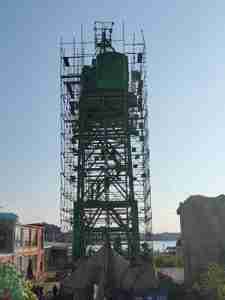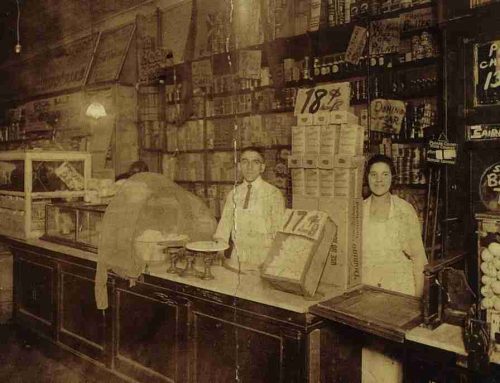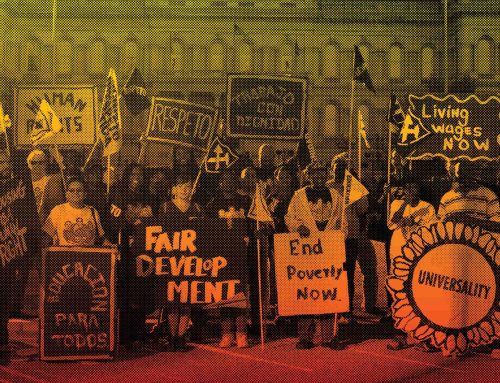The largest artifact in the museum’s collection is the colossal crane that watches sentinel over the museum’s campus.
At 104-feet tall, the 1942 behemoth is dubbed a “whirley crane” for its ability to turn 360 degrees. This Bethlehem Steel Clyde Model 17 DE 90 crane was instrumental in Bethlehem Steel’s prolific World War II shipbuilding effort. The crane’s unique full rotation feature allowed it to help the Bethlehem Steel Fairfield shipyard hit record-breaking production numbers of Liberty and Victory ships during the war. With more than 44,000 workers and dozens of whirley cranes, the yard was building one vessel per month by mid-1943, and launching an average of one ship every thirty-five hours.
Unlike many of its counterparts, this particular crane’s service continued long after peace was restored. Following World War II, it was transferred to Bethlehem Steel’s Key Highway shipyard. In an unprecedented experimental project in 1951, the crane helped “jumboize” a former Victory war ship for commercial use. This process involved adding a large midsection to the ship, and its historic success paved the way for many similar projects.
The crane remained in active service until 1982, when the yard closed. That’s when the BMI, eager to help Baltimore hold onto its incredible shipbuilding heritage, sought it out as a donation. The shipyard’s new owners obliged, and the property’s last standing crane was disassembled, sent down the Inner Harbor on barges, painted, and reassembled where it still stands today.
In 2016, the museum launched the Save the Crane Campaign with an online, crowd-sourced fund drive and more than 320 individuals, corporations, foundations, and public funders generously helped to make the crane’s restoration possible. The first phase of restoration—cleaning and sealing the crane’s cab, including removing some 350 lbs. of pigeon guano—was completed soon after.
In early 2019, heavy equipment arrived on the BMI campus to remove the crane’s boom. During the spring and summer, the crane was carefully restored and painted. The public overwhelmingly voted for the color green in a survey conducted with area residents and friends of the museum, and the museum opted for a contemporary shade that still honors the historic green color it was originally painted in 1942. In the fall of 2019, the boom was re-attached and the restoration project completed.
With the installation of LED lights at end of 2020, the crane has become a landmark for South Baltimore and a symbol of how industrial might helped win WWII.












